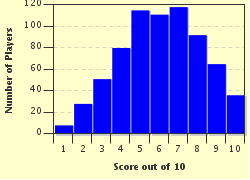Quiz Answer Key and Fun Facts
1. One of the worst fighters to fly in RAF service was the Defiant. Who designed this unique aircraft?
2. One of Germany's most unusual aircraft was the BV-141, designed by Blohm und Voss. What was unusual about this aircraft?
3. One of the worst US aircraft to enter squadron service was the P-39 designed by Bell. What country actually used the aircraft to much success?
4. Me-323 was one of the largest, slowest, and most vulnerable aircraft of World War II. How many aircraft survived in service past 1944?
5. Definately the oddest transport prototype was the Antonov A-40. What was this aircraft?
6. One of the worst Italian aircraft of the war was the Breda Ba.88. What was this plane's proposed role?
7. As the war progressed in Japan, the aircraft enginers become more and more creative (or desperate). One of their final designs was the MXY-7 Ohka piloted missile. What did the Americans call this plane?
8. Another piloted missile was attempted by Germany. The Fi-103R was a piloted version of the V-1. What was the pilot expected to do once locked on target?
9. The Fairey Battle was the primary light attack aircraft of the RAF at the beginning of World War II. What battle was the combat debut for this aircraft?
10. The A-24 was a dive bomber for the USAAC. What enemy type directly influenced the design of this aircraft?
Source: Author
barisax14
This quiz was reviewed by FunTrivia editor
bloomsby before going online.
Any errors found in FunTrivia content are routinely corrected through our feedback system.

